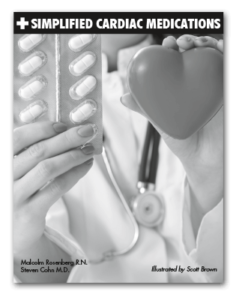 Cardiac Physiology, Pathophysiology and Pharmacology … together in a 92 page cartoon format.
Cardiac Physiology, Pathophysiology and Pharmacology … together in a 92 page cartoon format.
by Malcolm Rosenberg, RN & Steven Cohn, MD
$18.95
When I was in nursing school, we were given a long list of cardiac medications and told to put each one on a 3×5 card with its generic name, trade name, classification, adult dose and side effects. That memorization process was how we were supposed to “learn” cardiac medications.
This book “Simplified Cardiac Medications” delivers understanding not memorization. There are plenty of other reference books available to look up loading doses and onset, peak and duration. That stuff – while obviously important – would detract from the reason for this book which is to help you understand how cardiac medications work. And, believe it or not, understanding is easier than memorization!
Cardiac physiology, pathophysiology and pharmacology all cover the same ground but from different perspectives. Usually this material is taught in three separate classes. We thought that it made more sense to discuss heart function, disease and medication together in one book.
For simplicity (and even enjoyment), most of the material is presented in cartoons which have been verified for accuracy by a cardiologist. It should take you about two or three hours to read this book, and when finished you will have absorbed the academics of the medication side of cardiac nursing.
Excerpt from Alpha and Beta Receptors Chapter
Fact #1 The receptors (which we just talked about) on all the different target organs are not all alike. To be exact there are five (5) different kinds: alpha 1, alpha2, beta 1, beta 2, and dopaminergic. Fact #2 The five different type receptors cluster on certain organs and generally promote increased activity(fight or flight) of that organ. Let’s see where the different receptors are.
Alpha 1
Alpha 1 receptors are primarily located in the peripheral capillaries of the skin. Stimulation of the alpha 1 receptors causes vasoconstriction of capillaries in the skin. This redirects blood flow to essential organs. Have you ever heard of a “cold fear”? The alpha 1 receptors also clamp down on arterioles in the kidney. This maintains blood pressure by retaining fluids.
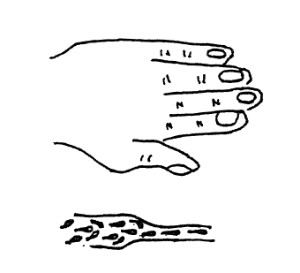
Alpha 2
Alpha 2 receptors are in the brain. Stimulating them causes vasodilation.
Excerpt from Calcium Channel Blockers Chapter
We will start with a very quick review of muscular contractions. Do not rely on it to pass cardiology boards. When the myocin and actin fibers interdigitate (Remember?) they need lots of calcium. Most of the drags we looked at earlier get more calcium to the myocin and actin one way or another.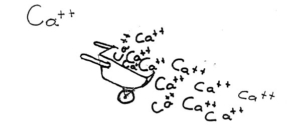
To get to the interior of each cell, it flows through a channel or door. Blocking that channel (closing the door or keeping it just slightly ajar)…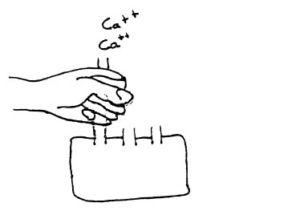 reduces the calcium, and reduces the force and velocity of contraction.
reduces the calcium, and reduces the force and velocity of contraction.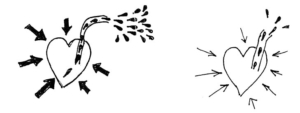
Excerpt from Drugs for Hypertension Chapter
To combat hypertension there are medications. To understand these medications is probably the reason you are reading this book. If there is any other reason please tell me. Roughly speaking there are four things to do.
(1) Relax with or without medication
(2) Reduce the volume with diuretics
(3) Reduce the volume of blood pumped by reducing the heart rate and contractility with beta blockers (not changing the volume)
(4) Open up the vasculature with alpha blockers, beta blockers or ace inhibitors or
(5) A combination of the above
Diuretics. This seems pretty obvious. If the vasculature won’t expand to allow more blood flow, then we reduce the blood volume. Taking out the water does this. There are two important points to keep in mind. One: watch the blood pressure. It might drop too much. The other frequent side effect Of diuretics is losing potassium. Even with potassium sparing diuretics you must be aware of potassium levels and the signs and symptoms of high and low levels of potassium.
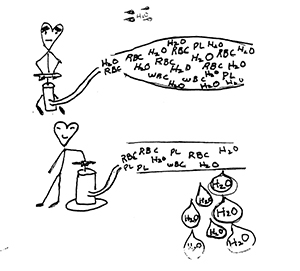
Beta Blockers for Hypertension. For combating hypertension beta blockers are second only to diuretics. Beta blockers reduce the heart rate and contractility. This produces less blood flow. Beta blockers prevent the sympatlietic nervous system from activating the renin-angiotensin system.

